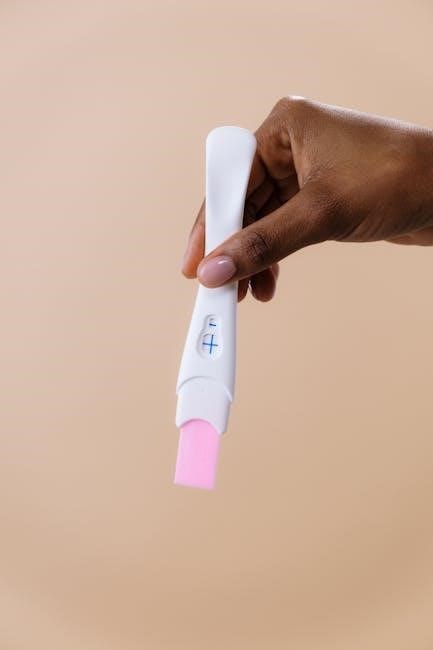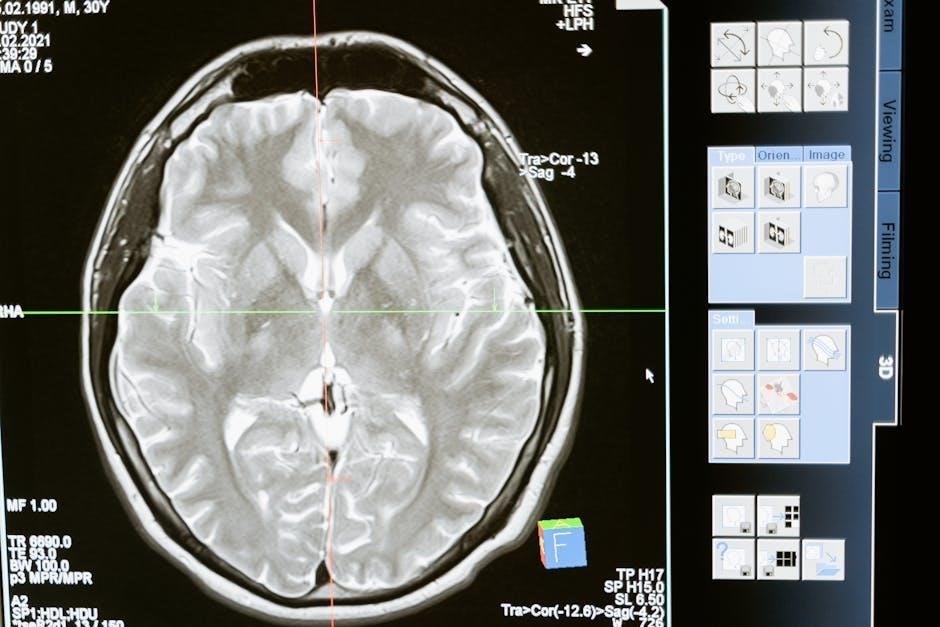The Novice 27 Dressage Test is a foundational competition for emerging riders, assessing basic skills in a 20×60 meter arena. It’s available as a free PDF download, providing clear guidelines and visual diagrams to help participants prepare effectively.
1.1 Overview of the Test
The Novice 27 Dressage Test is designed for riders transitioning from introductory to intermediate levels. Conducted in a 20×60-meter arena, it assesses basic dressage skills, including working trot, canter, and walk. The test emphasizes smooth transitions, accurate geometry, and a calm, willing horse. Riders are judged on their ability to execute movements like circles, serpentines, and rein changes with clarity. The test is scored out of 230 marks, with penalties for errors in rhythm, tempo, or accuracy. The Novice 27 test is widely used in competitions and is available as a free PDF download from official sources, providing riders with a clear guide to practice and prepare effectively. Visual diagrams in the test sheet help riders understand the required patterns and sequences.
1.2 Importance of the Test for Novice Riders
The Novice 27 Dressage Test is a crucial stepping stone for riders developing their skills. It provides a structured framework to assess and refine foundational dressage abilities, such as maintaining rhythm, accuracy, and control. The test helps riders build confidence and establish a strong partnership with their horses. By focusing on clear transitions and precise movements, riders can improve their overall performance. The test also serves as a benchmark for progression, allowing riders to identify areas for improvement. Its availability as a free PDF ensures accessibility for practice and competition preparation, making it an essential resource for novice riders aiming to advance their skills and move to higher-level tests.
1.3 Availability of the Test in PDF Format
The Novice 27 Dressage Test is widely available in PDF format, ensuring easy access for riders and trainers. Official sources, such as the British Dressage website, offer free downloads, allowing riders to practice and prepare for competitions. Additionally, platforms like Skor.ie and E-Riders provide downloadable versions, often accompanied by diagrams and scoring tools. The PDF format ensures clarity and portability, making it ideal for study and use during practice sessions. Regular updates to the test are also reflected in the PDF versions, keeping riders informed of the latest standards and requirements. This accessibility makes the Novice 27 Test a valuable resource for novice riders seeking to improve their skills and compete effectively.

Structure of the Novice 27 Dressage Test
The Novice 27 Dressage Test is conducted in a 20×60-meter arena, featuring movements like working trot, canter, and walk. The test lasts approximately 4.5 minutes, focusing on clarity and precision in execution, with a clear pattern to follow, making it ideal for novice riders to demonstrate foundational skills in a structured format;
2.1 Arena Size and Dimensions
The Novice 27 Dressage Test is performed in a standard 20-meter by 60-meter arena, a size common for novice-level competitions. This dimensions provide ample space for executing required movements while maintaining visibility for judges. The arena setup follows traditional dressage standards, ensuring consistency across competitions. Riders must familiarize themselves with the arena’s markings and layout to navigate the test pattern accurately. The size ensures that horses and riders can perform transitions and movements without restriction, making it ideal for assessing novice skills. Proper arena dimensions are critical for fair evaluation and smooth test execution.
2.2 Movements and Patterns Included
The Novice 27 Dressage Test includes a variety of movements designed to assess the horse’s obedience and the rider’s ability. Key elements include working trot, canter, and walk, along with transitions between these gaits. Riders are required to execute 20-meter circles, rein changes, and serpentines, demonstrating control and precision. The test also incorporates halts and straightforward patterns to evaluate the horse’s responsiveness and the rider’s coordination. These movements are fundamental for developing a strong foundation in dressage, ensuring both horse and rider are prepared for more advanced challenges. The patterns are structured to flow smoothly, allowing riders to showcase their skills effectively.
2.3 Diagram and Visual Representation
The Novice 27 Dressage Test includes a detailed diagram that visually outlines the required movements and patterns. This diagram is essential for riders to understand the sequence of actions, such as circles, serpentines, and rein changes. It provides a clear representation of the arena layout and the specific paths the horse and rider must follow. The visual guide helps riders practice and prepare effectively, ensuring they execute the test accurately. The diagram is included in the official PDF version of the test and is a valuable resource for both competitors and trainers to visualize and master the required movements. It ensures clarity and precision in performance.

Scoring and Judging Criteria
The Novice 27 Dressage Test is scored on a 230-point scale, evaluating movements, rhythm, and rider aids. Judges assess clarity, accuracy, and the horse’s willingness to respond, ensuring a fair and precise evaluation of each performance. This system provides a clear framework for competitors to understand their scores and improve their skills effectively.
3.1 Total Marks and Grading System
The Novice 27 Dressage Test is evaluated on a total of 230 marks. Each movement receives a score from 0 to 10, with higher marks reflecting better execution. The grading system emphasizes accuracy, rhythm, and the horse’s responsiveness to aids. Judges allocate points based on predefined criteria, ensuring consistency and fairness. The total score is then converted into a percentage, providing a clear measure of performance. This system helps riders track their progress and identify areas for improvement, making it an essential tool for both competitive and training purposes.
3.2 Key Elements Judges Look For
Judges in the Novice 27 Dressage Test primarily assess the horse’s rhythm, suppleness, and obedience. They evaluate the accuracy of movements, such as circles and transitions, ensuring they are performed precisely. The rider’s ability to maintain a steady tempo and demonstrate clear, effective use of aids is also critical. Judges look for smooth transitions between gaits and a relaxed, willing horse. Additionally, they check the rider’s position and balance, ensuring they remain consistent throughout the test. These elements collectively determine the overall harmony and quality of the performance, making them essential for achieving high scores.
3.3 Role of the Judge in Evaluation
The judge plays a pivotal role in evaluating the Novice 27 Dressage Test, ensuring fairness and adherence to dressage standards. They impartially assess each movement, awarding marks based on accuracy, rhythm, and the horse-rider partnership; The judge’s feedback highlights strengths and areas for improvement, providing valuable insights for future training. Their expertise guarantees a consistent and unbiased evaluation, essential for maintaining the integrity of the competition. Judges also ensure riders adhere to test rules and arena etiquette, upholding the sport’s traditions and standards. Their detailed remarks and scores help competitors understand their performance and strive for excellence.

Purpose and Benefits of the Test
The Novice 27 Dressage Test is designed to enhance foundational riding skills, promoting harmony between horse and rider. It fosters progression in balance, coordination, and precise movement execution.
By mastering this test, riders build confidence and establish a strong base for advancing to higher-level competitions, making it an essential step in their equestrian journey.
4.1 Developing Rider and Horse Partnership
The Novice 27 Dressage Test emphasizes the cultivation of a strong bond between rider and horse. By focusing on clear communication and precise aids, riders learn to guide their horses seamlessly through various movements. The test’s structured patterns and transitions encourage trust and mutual understanding, fostering a harmonious partnership. As riders navigate the test, they develop the ability to anticipate their horse’s reactions, enhancing coordination and teamwork. This foundation is crucial for more advanced maneuvers in higher-level tests, making the Novice 27 a pivotal step in building a lasting and effective rider-horse relationship.
4.2 Improving Basic Dressage Skills
The Novice 27 Dressage Test is designed to refine fundamental dressage skills, focusing on transitions, balance, and rhythm. Riders practice working trot, canter, and walk, enhancing their ability to maintain consistent gaits. The test also introduces simple changes of direction, helping riders develop accuracy and control. Regular practice of the test pattern allows riders to improve their horse’s responsiveness to aids, fostering clearer communication. Judges’ feedback highlights areas for improvement, enabling riders to refine their technique. By mastering these basic elements, riders build a solid foundation for more complex movements in future tests, ensuring steady progress in their dressage journey.
4.3 Preparation for Higher-Level Tests
The Novice 27 Dressage Test serves as a stepping stone for riders aiming to advance to higher-level competitions. By mastering the test’s exercises, riders develop the skills and confidence needed for more complex patterns. The test introduces foundational movements that are expanded upon in higher tests, such as precise transitions, accurate geometry, and smooth changes in pace. Regular practice of the Novice 27 test helps riders refine their ability to interpret and execute test patterns, a crucial skill for success in higher levels. Additionally, the test’s structure familiarizes riders with competition protocols, preparing them for the demands of more advanced dressage tests. This foundational experience is essential for a seamless transition to higher-level competitions.

Competition Format and Requirements
The Novice 27 Dressage Test is conducted in a 20×60-meter arena, lasting approximately 6 minutes, with specific rules for horse equipment and rider attire.
5.1 Arena Setup and Rules
The Novice 27 Dressage Test requires a standard 20×60-meter arena, clearly marked with letters and precise measurements. Riders must enter at point A, maintaining correct alignment and adherence to the specified pattern. The arena setup ensures a fair and consistent environment for all competitors, with clear guidelines to avoid errors. Properly placed markers and accurate dimensions are essential to execute movements correctly. Judges strictly monitor the arena’s setup to ensure compliance with regulations, ensuring a level playing field for all participants. Adhering to these rules is crucial for a successful test, as any deviation may result in penalties or disqualification.
5.2 Time Limits and Average Ride Time
The Novice 27 Dressage Test typically lasts around 5 to 6 minutes, with an average ride time of 5 minutes and 35 seconds. This duration is calculated based on the arena size (20×60 meters) and the complexity of the movements. Riders are advised to allow additional time for entry and exit, with a recommended 2 minutes added for scheduling purposes. The test must be completed within the allotted time frame to avoid penalties. Judges monitor the ride time closely, ensuring adherence to the specified duration. Proper time management is crucial for a smooth and efficient performance, as exceeding the time limit may result in deductions or disqualification.
5.3 Equipment and Attire Regulations
Riders competing in the Novice 27 Dressage Test must adhere to specific equipment and attire regulations. The horse must be ridden in an ordinary snaffle bridle, and saddlery must comply with dressage standards. Riders are required to wear traditional dressage attire, including a riding helmet, gloves, a fitted jacket, and riding boots. The equipment and attire must be in good condition and meet safety standards. Proper presentation is essential, as judges evaluate both the horse’s performance and the rider’s professionalism; All equipment must be approved for dressage competitions, ensuring fairness and safety for all participants. Adherence to these regulations is a key aspect of competing in the Novice 27 test.

Resources for Preparation
Official PDFs of the Novice 27 Dressage Test are available on British Dressage and USEF websites, offering detailed guidelines, diagrams, and scoring criteria for effective preparation.
6;1 Official Sources for Download
The official Novice 27 Dressage Test PDF can be downloaded from the British Dressage website. This resource provides detailed diagrams and movement descriptions, ensuring accuracy and clarity for riders. Additionally, the USEF website offers the most updated versions of dressage tests, including the Novice 27, which was revised in 2021 to align with current standards. Riders are encouraged to use these official sources to access the latest test patterns and scoring criteria, helping them prepare effectively for competitions. These PDFs are essential tools for understanding the test structure and improving performance. Always verify the download source to ensure authenticity and compliance with competition regulations.

6.2 Free PDF Downloads and Manuals
Several platforms offer free Novice 27 Dressage Test PDF downloads for educational purposes. Websites like British Dressage and USEF provide official test sheets, diagrams, and manuals. Additionally, platforms such as E-Riders and Skor.ie offer free resources, including test patterns and scoring guidelines. These manuals are invaluable for riders to practice and understand the test format. Many libraries and equestrian communities also share these PDFs, ensuring accessibility for novice riders. Always verify the source to ensure the downloaded material is up-to-date and compliant with current dressage standards. These free resources are essential for effective preparation and understanding of the test requirements.
6.3 Online Platforms for Practice
Online platforms like Skor.ie and E-Riders offer comprehensive tools for practicing the Novice 27 Dressage Test. These platforms provide interactive test diagrams, scoring guides, and detailed movement patterns. Riders can use these resources to visualize the arena layout and practice transitions between movements. Additionally, websites like British Dressage and USEF host digital versions of the test, allowing riders to download and study the test pattern. Online platforms also offer video tutorials and analysis tools, helping riders refine their skills and prepare effectively for competitions. These digital resources are invaluable for riders aiming to master the Novice 27 test and improve their performance in a structured manner.

Tips for Success in the Test
Understand the test pattern, use aids effectively, and maintain focus. Practice transitions and tempo to ensure smooth execution. Stay calm and communicate clearly with your horse.
7.1 Understanding the Test Pattern
Understanding the test pattern is crucial for success in the Novice 27 Dressage Test. The test is conducted in a 20×60-meter arena and includes movements such as working trot, canter, and walk. Riders must execute transitions smoothly and maintain consistent rhythm. The test begins with entering in working trot and halting, followed by circles, changes of rein, and serpentines. Visualizing the pattern helps riders navigate the arena confidently. Practicing the sequence ensures accurate execution, while attention to tempo and balance enhances overall performance. Familiarizing oneself with the test diagram, available in the PDF, allows riders to anticipate each movement and ride precisely.
7.2 Effective Use of Aids
Effective use of aids is essential for clear communication between rider and horse in the Novice 27 Dressage Test. Riders should employ subtle and precise cues with their seat, legs, and reins to guide the horse through the test pattern. Clarity in aids ensures smooth transitions between movements, such as working trot, canter, and walk. Judges prioritize the accuracy and independence of aids, as they reflect the rider’s ability to maintain control and rhythm. Practicing the test pattern helps riders develop a consistent and effective use of aids, enabling the horse to perform each movement with precision and harmony. This skill is fundamental for achieving high scores in the competition.
7.3 Managing Nerves and Staying Focused
Managing nerves and staying focused is crucial for novice riders in the Novice 27 Dressage Test. Deep breathing exercises and visualization can help calm pre-competition jitters, allowing riders to maintain concentration. Practicing the test pattern repeatedly builds familiarity and confidence, reducing anxiety. Riders should focus on clear communication with their horse, using subtle aids to ensure smooth transitions between movements. Staying present and avoiding distractions is key to executing the test accurately. A positive mindset and thorough preparation are essential for overcoming nerves and delivering a polished performance; By staying focused, riders can showcase their skills and partnership with their horse effectively.

Common Mistakes to Avoid
Common mistakes include incorrect movements, loss of rhythm, and misusing arena space. Riders should avoid miscalculating circles, failing to maintain tempo, and inaccurate turns to achieve higher scores.
8.1 Errors in Movement Execution
One of the most common mistakes in the Novice 27 Dressage Test is incorrect execution of movements. Riders often struggle with precise circle sizes, miscalculating the correct diameter, and failing to maintain consistent bend. Additionally, improper transitions between gaits, such as rushing or hesitating during changes, can lead to lower scores. Incorrect alignment during movements, like not riding straight lines or failing to center halts, is another frequent error. Judges also penalize riders for not maintaining a clear and steady rhythm, which disrupts the flow of the test. Practicing patterns repeatedly and seeking feedback can help riders refine their movement execution and improve overall performance.
8.2 Loss of Rhythm and Tempo
Loss of rhythm and tempo is a common issue in the Novice 27 Dressage Test, where riders often struggle to maintain a consistent pace. This can occur due to over- or under-riding, causing the horse to rush or lag. Judges penalize irregularities in rhythm, as they disrupt the test’s flow and harmony. Riders must focus on maintaining a steady tempo throughout all movements, especially during transitions between gaits. Practicing in front of mirrors or using a metronome can help develop a stronger sense of rhythm. Additionally, tight circles and serpentines often expose tempo inconsistencies, emphasizing the need for precise control and clear communication with the horse.
8.3 Incorrect Use of Arena Space
Incorrect use of arena space is a frequent error in the Novice 27 Dressage Test, where riders often fail to fully utilize the 20×60 meter arena. This can result in movements being performed too close to the edges, risking loss of accuracy and control. Judges deduct points for veering off course or failing to maintain proper alignment. Additionally, improper use of space can disrupt the flow of the test, making it appear disorganized. Riders should practice visualizing the arena layout and ensure precise execution of each movement to avoid such mistakes. Understanding the arena dimensions and movement patterns is crucial for maintaining harmony and achieving higher scores.

Significance of the Test in Equestrian Sport
The Novice 27 Dressage Test plays a vital role in equestrian sport, serving as a foundational assessment for riders. It is widely recognized for its structured format, which helps develop essential skills and prepare competitors for higher-level events. The test’s popularity in competitions underscores its importance in fostering progression and excellence in dressage.
9.1 Role in Rider Development
The Novice 27 Dressage Test is instrumental in rider development, offering a structured framework to refine foundational skills. It introduces riders to the basics of dressage, emphasizing balance, coordination, and clear communication with the horse. The test’s design encourages riders to develop a secure seat, effective use of aids, and the ability to guide the horse through precise movements. By mastering the Novice 27 test, riders build confidence and establish a strong foundation, which is essential for progressing to more advanced levels of dressage. The test’s accessibility and clarity make it a valuable tool for fostering growth and understanding in both riders and horses.
9.2 Popularity in Competitions
The Novice 27 Dressage Test is widely popular in competitions due to its accessibility and focus on foundational skills. Riders at the early stages of their dressage journey find it an ideal platform to showcase their abilities. Competitions often feature this test as it provides a fair assessment of basic proficiency, making it a favorite among both novice riders and organizers. Its structured format and clear scoring system ensure consistency, enhancing its appeal in equestrian events worldwide. The test’s popularity is further boosted by its availability as a free PDF download, allowing easy access for practice and competition preparation.
9.3 Continuous Updates and Revisions
The Novice 27 Dressage Test undergoes regular revisions to align with contemporary equestrian standards. Updates ensure the test remains relevant, reflecting current training methods and competition expectations. For instance, the 2021 revision incorporated feedback from judges and riders, enhancing clarity and fairness. These updates are promptly available in PDF format, ensuring competitors access the latest version. Continuous improvement maintains the test’s effectiveness in assessing novice riders’ progress, keeping it a dynamic and evolving tool in dressage education. This commitment to refinement underscores its importance in the sport, providing a consistent and up-to-date framework for evaluation and growth.
The Novice 27 Dressage Test is an essential tool for riders, offering structured guidelines and PDF accessibility. Embrace it as a stepping stone to equestrian excellence.
10.1 Summary of Key Points
The Novice 27 Dressage Test is a foundational assessment for riders, focusing on basic skills in a 20×60 meter arena. It evaluates trot, canter, and walk movements, emphasizing rhythm, accuracy, and horse-rider harmony. Available as a free PDF, the test includes diagrams and instructions for clear preparation. Riders are judged on effective use of aids, arena navigation, and overall performance. The test is popular in competitions, offering a structured pathway for skill development. It is regularly updated to reflect current standards, ensuring relevance and fairness. Downloading the official PDF from trusted sources like British Dressage is recommended for accurate practice and competition readiness.
10.2 Encouragement for Novice Riders
Novice riders should embrace the Novice 27 Dressage Test as a valuable learning tool. It provides a clear framework to develop foundational skills, helping build confidence and partnership with their horses. By practicing the test movements and focusing on rhythm and accuracy, riders can improve their abilities. The test’s structured format allows for measurable progress, making it an excellent stepping stone for future competitions. Remember, every ride is an opportunity to grow, and consistent practice with the PDF guide will enhance performance. Stay dedicated, enjoy the journey, and celebrate small achievements along the way.
10.3 Accessing the Test PDF
The Novice 27 Dressage Test PDF is readily available for download from official sources like British Dressage and other equestrian websites. Riders can easily access the document free of charge, ensuring they have the most up-to-date version for competition preparation. The PDF includes detailed instructions, diagrams, and scoring guidelines, making it an essential tool for practice and understanding the test structure. By downloading the official test sheet, riders can familiarize themselves with the movements and patterns, helping them perform confidently in competitions. Always verify the source to ensure accuracy and adherence to current standards.
